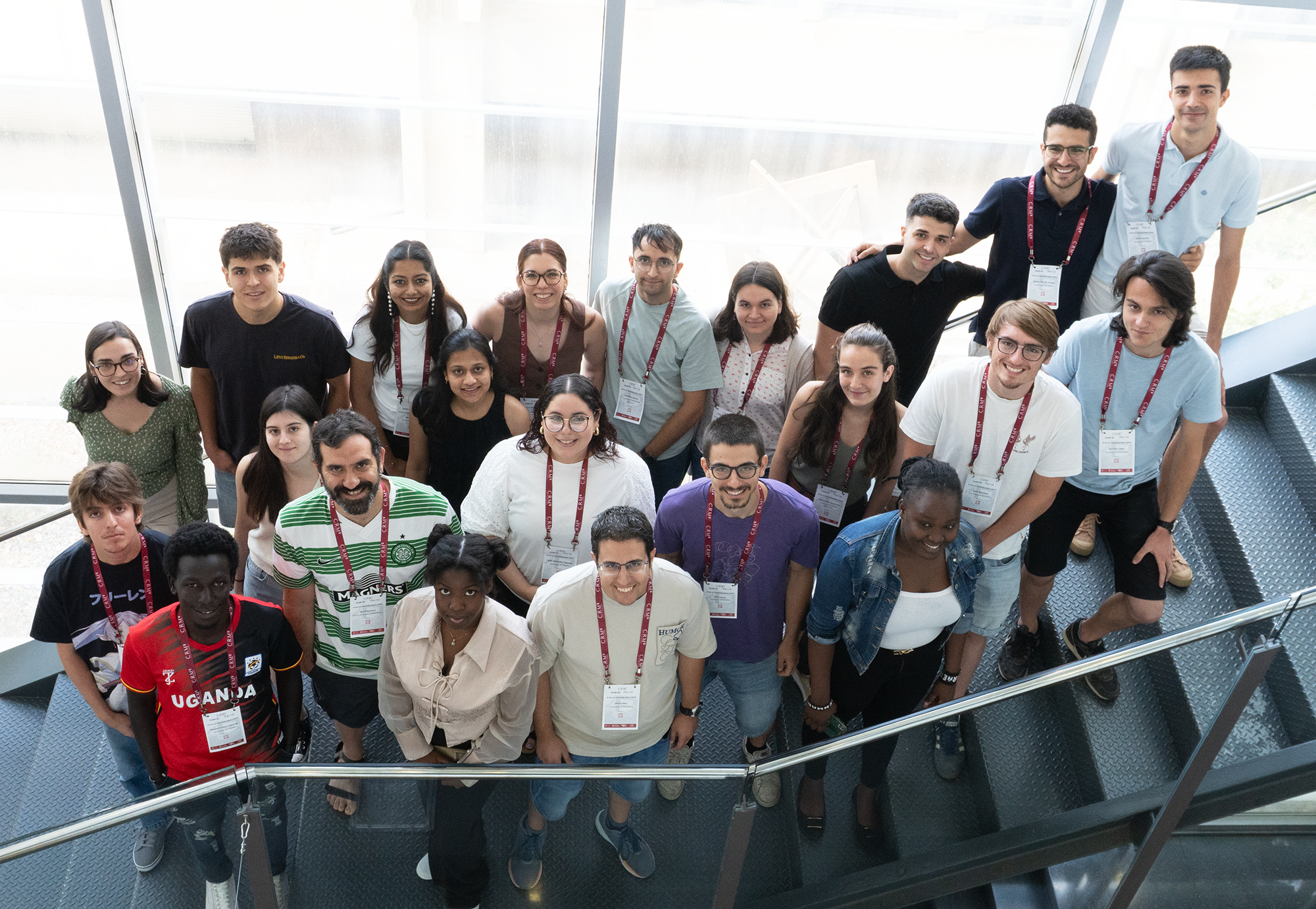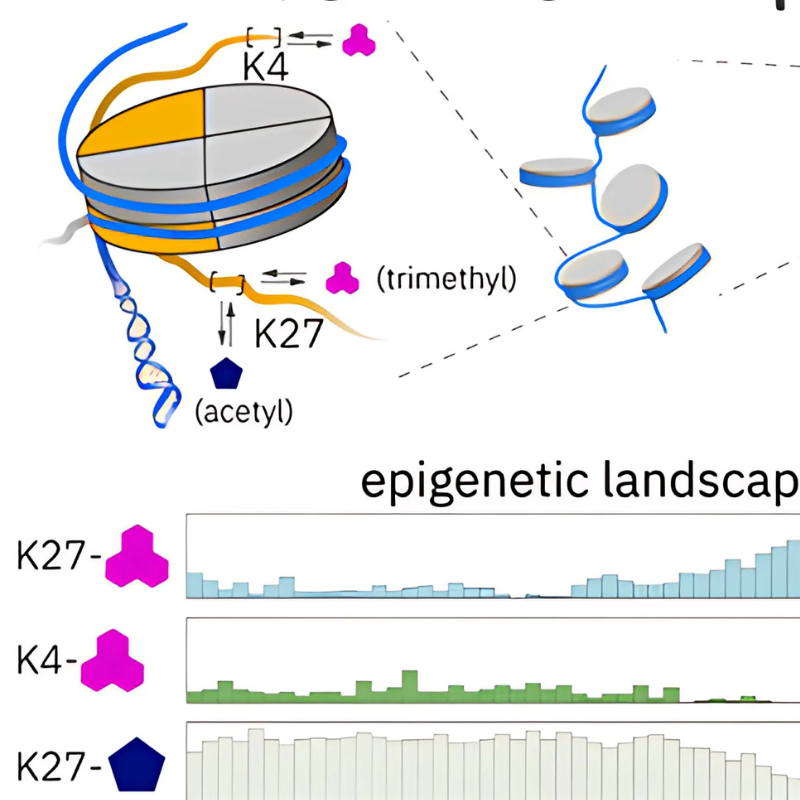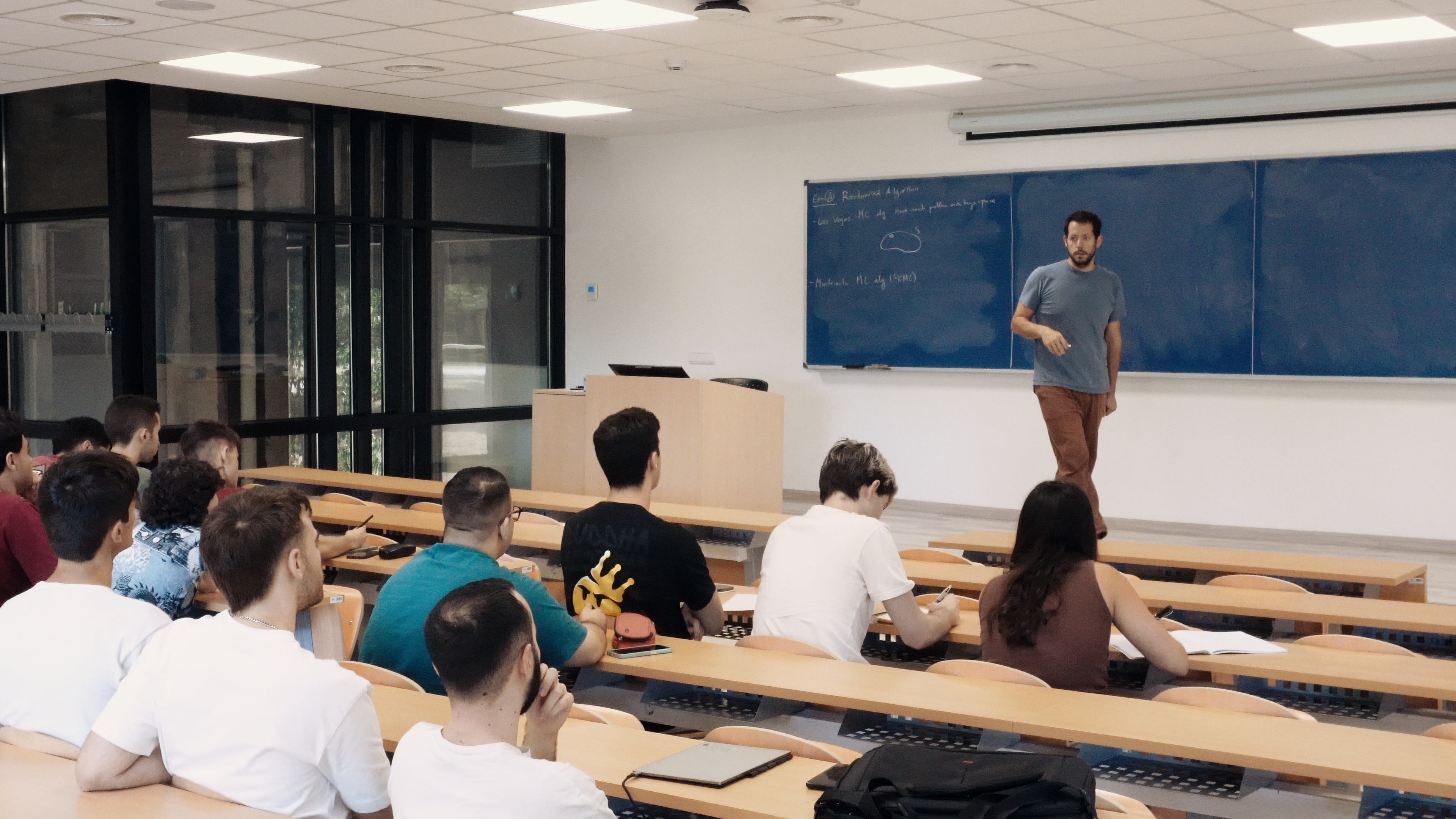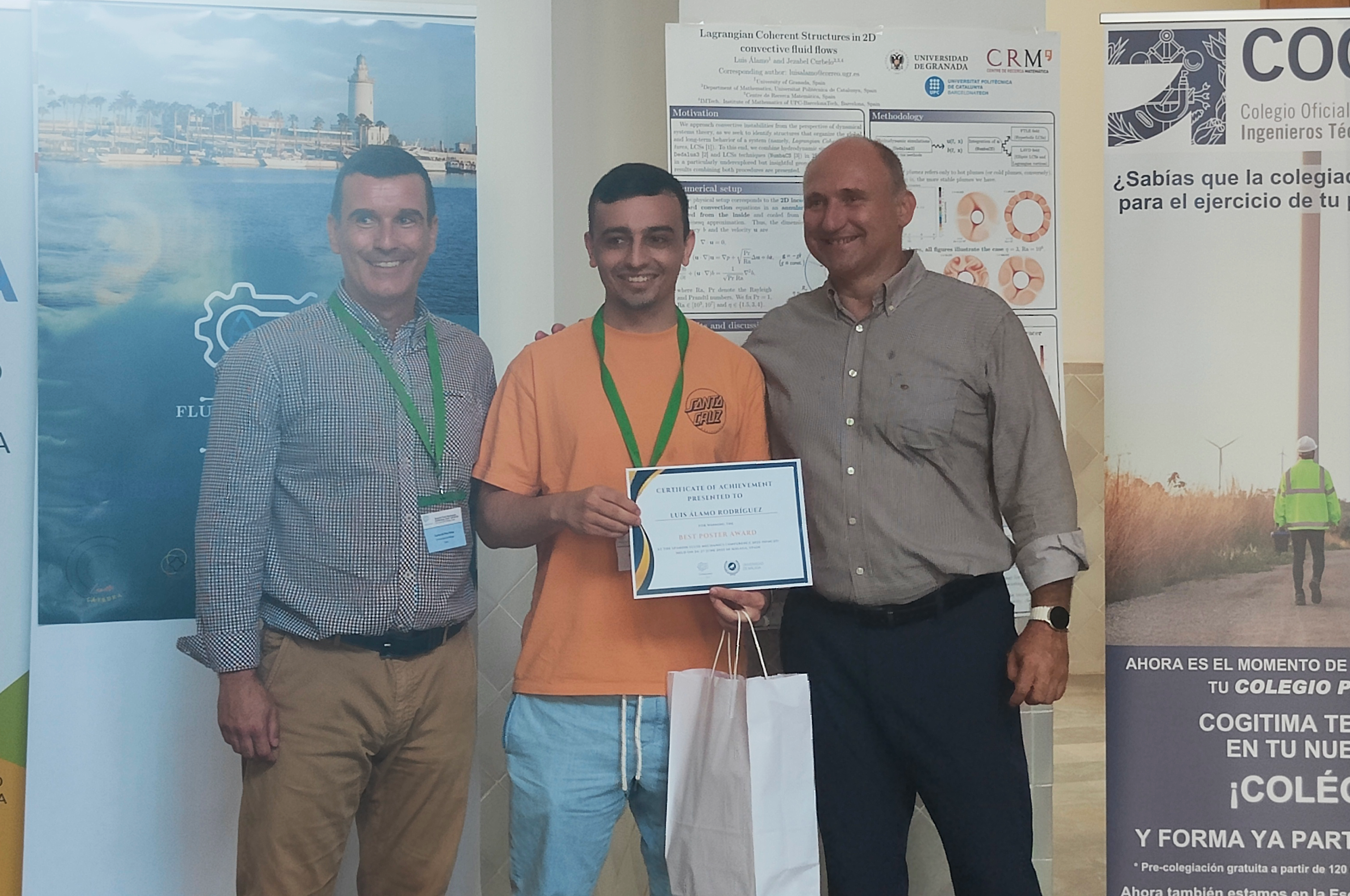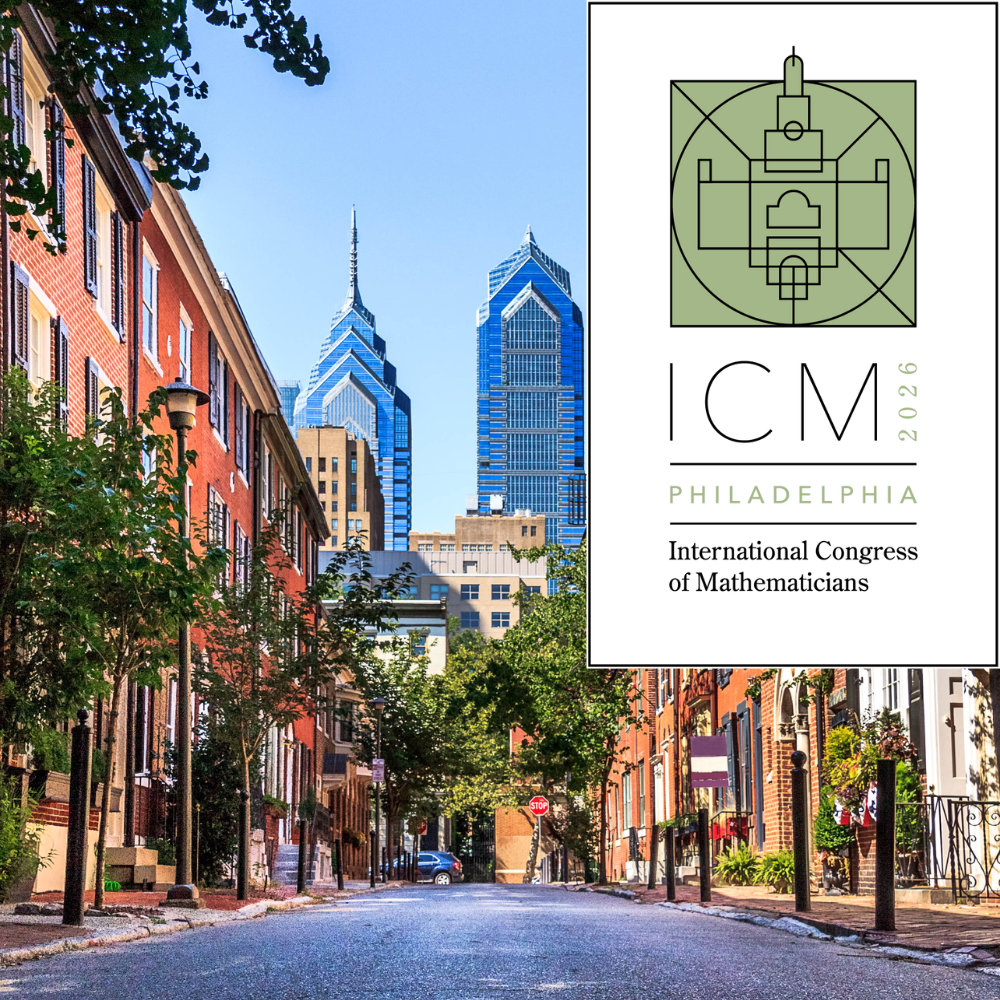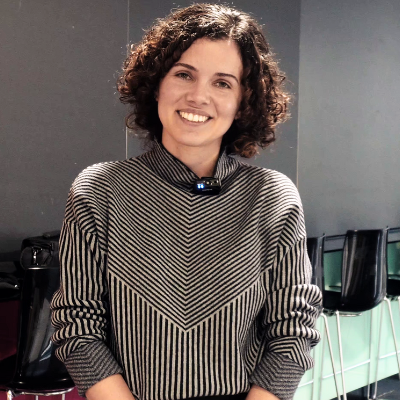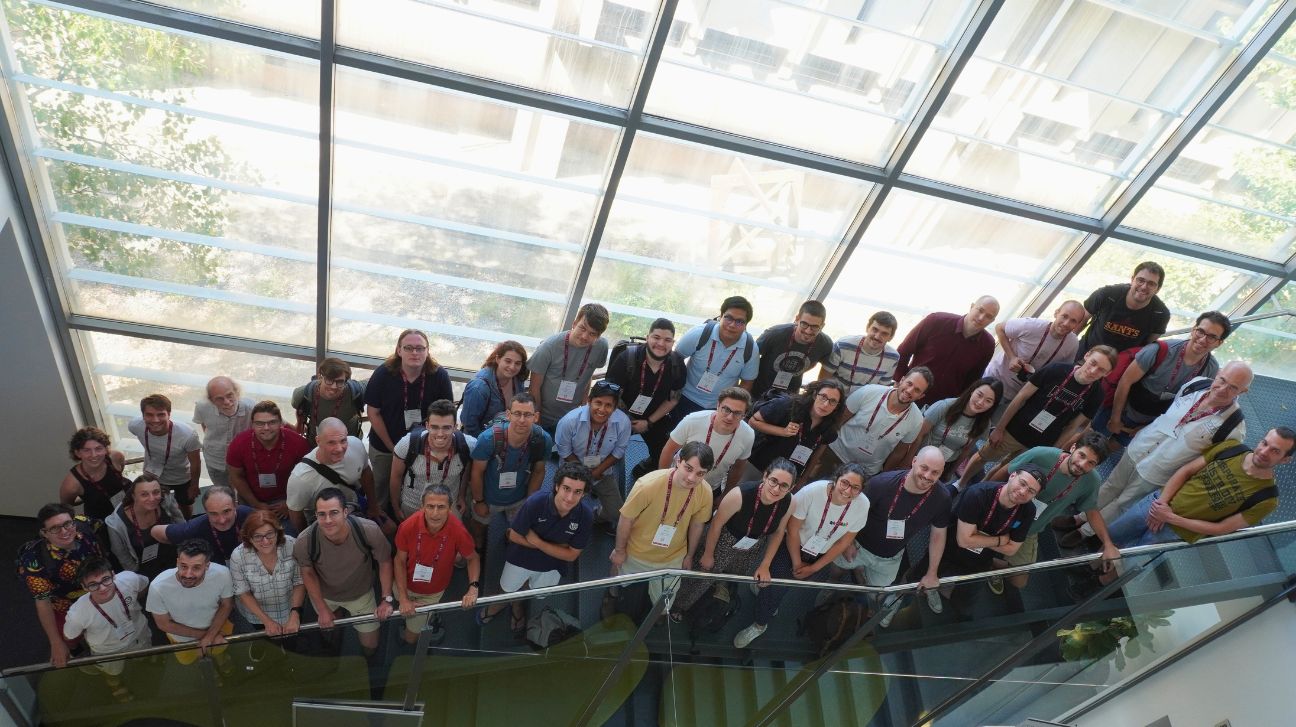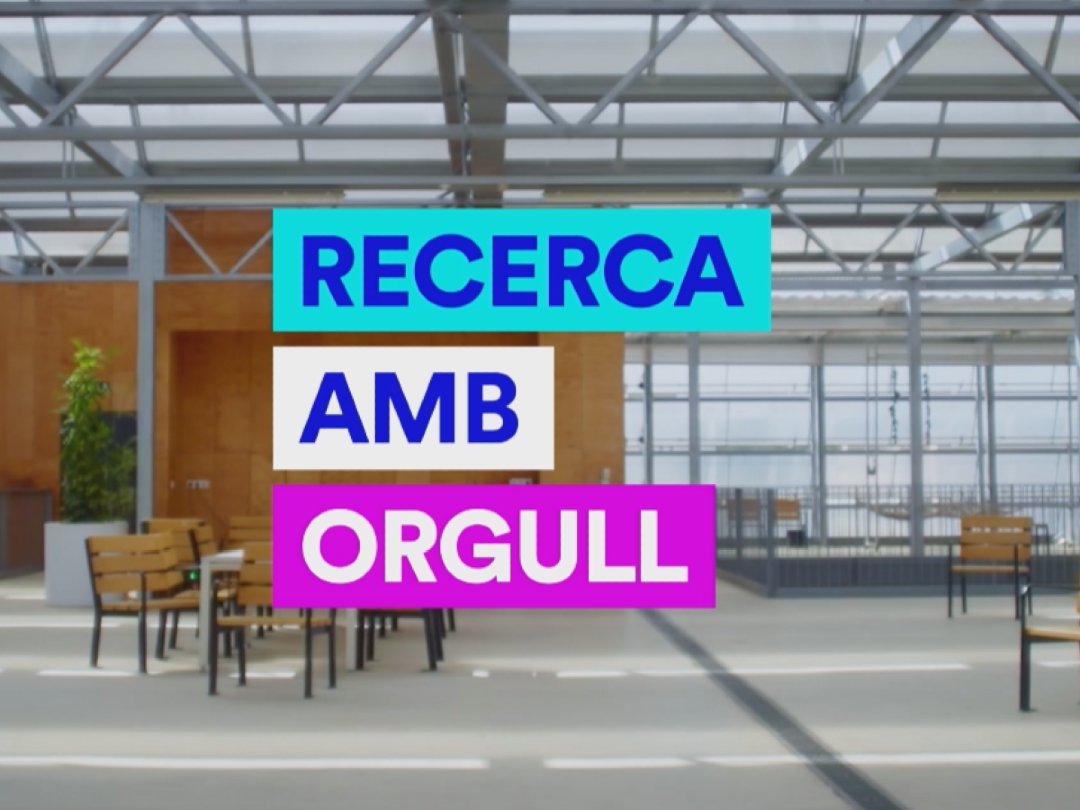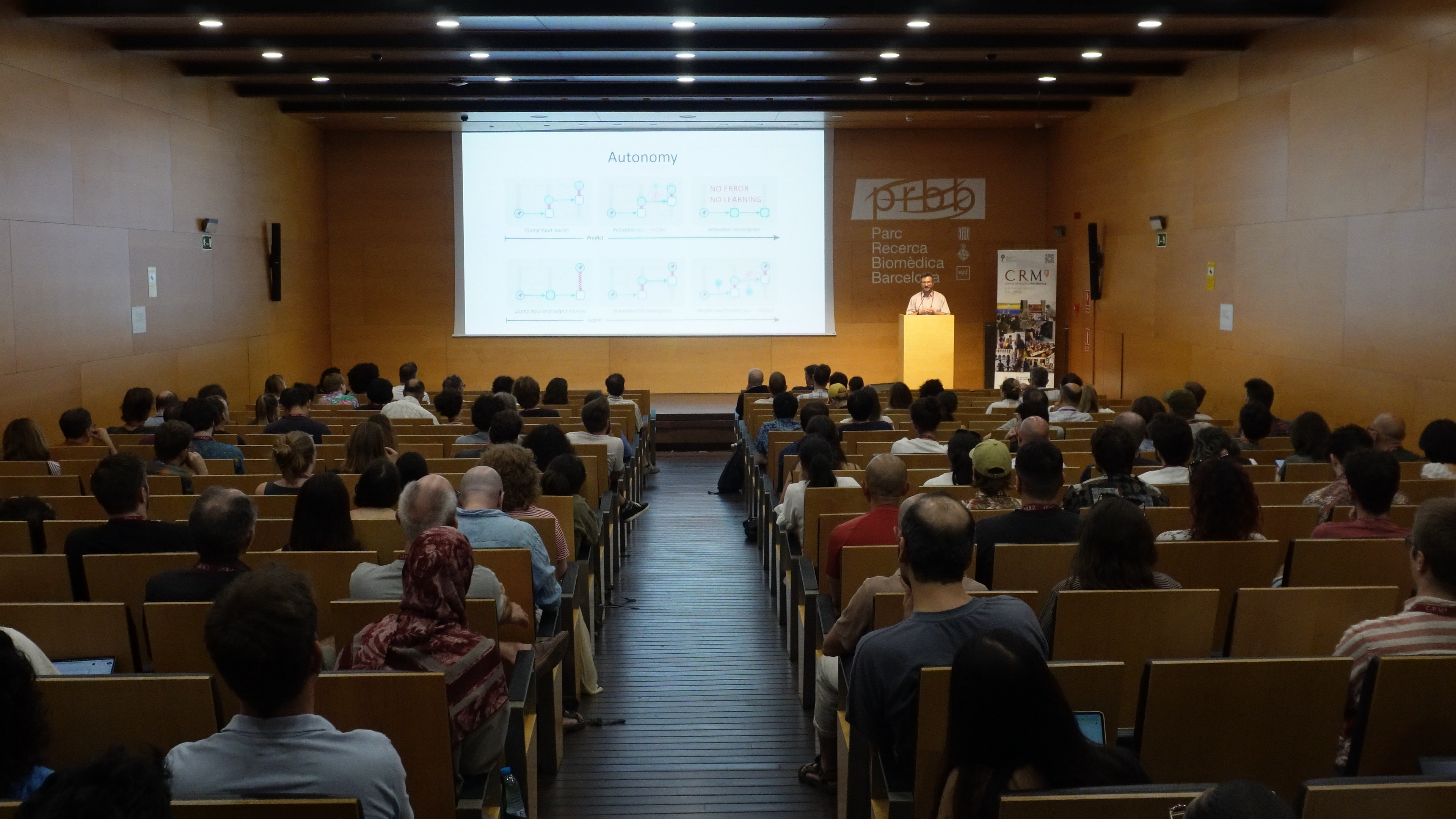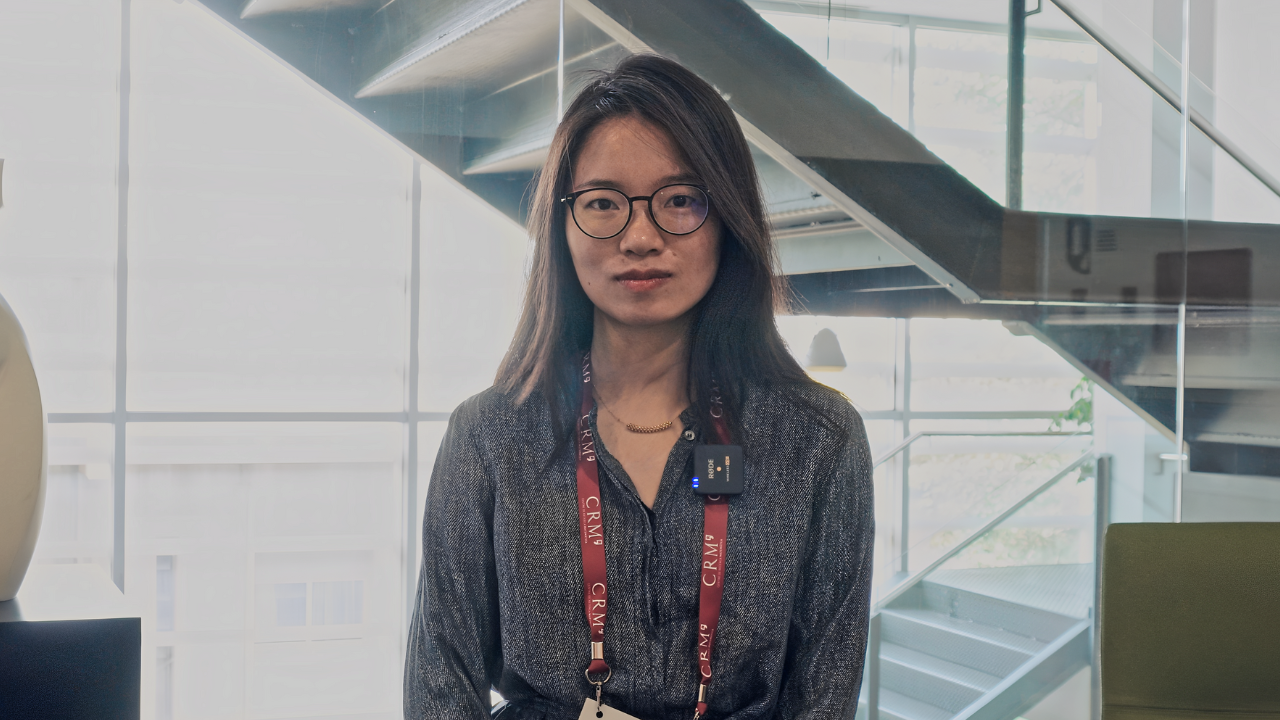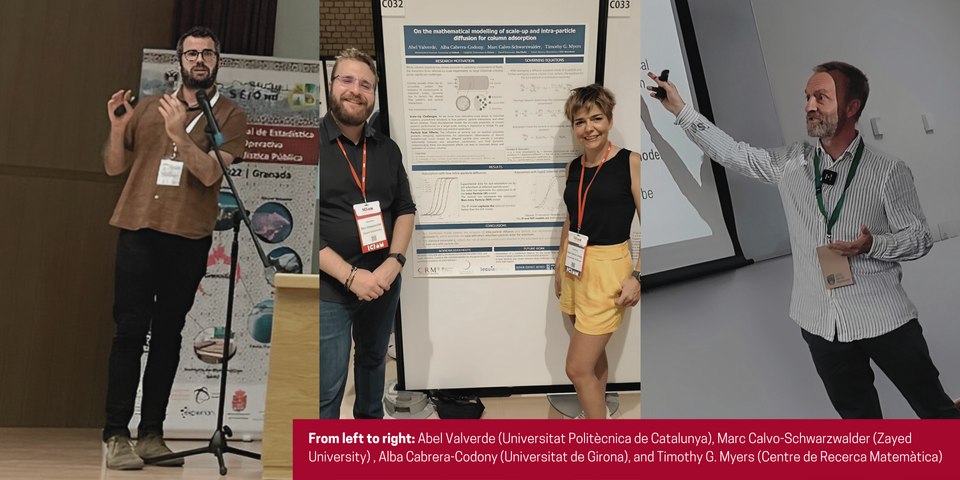
A new article by Abel Valverde (Universitat Politècnica de Catalunya), Alba Cabrera-Codony (Universitat de Girona), Marc Calvo-Schwarzwalder (Zayed University) and Timothy G. Myers (Centre de Recerca Matemàtica), published by the International Journal of Heat and Mass Transfer, proposes a mathematical formulation that, unlike standard models, focuses on the impact of adsorbent particle size on the efficiency of column sorption.
In our ongoing quest for a more sustainable future, one of the pivotal challenges we face is the removal of contaminants from our atmosphere and water. The most widely used method is a technique known as column sorption, either through absorption (where fluid molecules are dissolved or soaked up inside a solid or liquid) or adsorption (where molecules attach to a material’s surface). This process is like a molecular filter, selectively trapping and removing undesirable substances from gases or liquids as they flow through a column. Think of it as a super-efficient bouncer at a nightclub, only allowing the most unwanted party crashers to be ejected.
While this process may sound straightforward, the reality is much more intricate. Column sorption, as it stands, can be quite costly while more cost-effective alternatives do not offer the same environmental benefits. To understand why, we need to delve into the nitty-gritty of these filtration systems. Scientists typically start by testing small sorption columns about 1 to 15 centimetres long. However, real industrial-sized filters can be colossal in comparison, stretching up to 5 meters in length. Here’s the problem; what we discover from the small ones doesn’t always translate seamlessly to their bigger counterparts. A host of factors contributes to this unpredictability, including changes in flow patterns and the influence of wall proximity in small columns.

Now a team of researchers from the Universitat Politècnica de Catalunya, the Universitat de Girona, Zayed University, and the Centre de Recerca Matemàtica has developed a new mathematical model that accounts for the size of the adsorbent particles, which could help work around the scale-up problem when moving from experimental studies to working devices. This work sets up the basis to help us prepare for future research on how to make the big filters work better and be more cost-effective.
A Mathematical Model Accounting for Intra-particle Diffusion.
In the article, published by the International Journal of Heat and Mass Transfer, the research team has focused on a concept called intra-particle diffusion. This refers to how contaminants move within the adsorbent particles. As these particles grow in size, the time it takes for contaminants to reach the inner sanctum of adsorption sites also increases. Sometimes, this diffusion timescale becomes comparable to the adsorption timescale, leading to an imbalance in the governing equations. In simpler terms, it’s like a marathon where some runners have a head start and others need to catch up.
Another crucial aspect of sorption column studies is the breakthrough curve, a graphical representation of the concentration of contaminants at the column outlet over time that shows us how efficiently our filter works. To obtain a breakthrough curve, a column or adsorption bed filled with a solid adsorbent material is commonly used. In the column, a mixture containing the components to be separated is introduced. As the contaminants flow through the column, initially, our filter is at the peak of its performance, effectively capturing the unwanted components. However, as time goes on, it gets worn out and can’t catch any more.
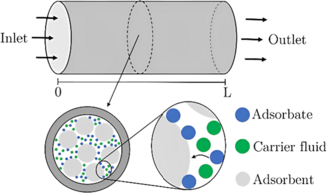
Schematic of the experimental setup.
To validate their models, the researchers turned to experiments to compare their findings with real-world breakthrough data. When they used bagasse fly ash as the adsorbent for wastewater treatment from a sugar distillery, for instance, smaller particles behaved predictably, producing a more common S-shaped breakthrough curve. However, larger particles marched to a different drumbeat, displaying an initial linear rise followed by an exponential increase. These findings deviated from more conventional mathematical models.
Similarly, when they looked at phosphorus removal with biochar microspheres, larger spheres exhibited a similar initial linear increase, followed by a slow decay, while smaller spheres followed a different pattern. Despite variations in materials and adsorption mechanisms, the common denominator appeared to be the impact of particle size.
Exploring the Environmental Applications of Diffusion
The study analyses comprehensive analytical models with and without intra-particle diffusion, based on linear and nonlinear sinks. The researchers developed a sophisticated mathematical formulation that takes into account the size of the particles and their internal diffusion. This model introduces a rate parameter, essentially a measure of how easily adsorbent particles allow contaminants to be absorbed. A high value means easy entry and a low value indicates difficulty. This parameter’s behaviour was confirmed through experiments, showing it’s sensitive to factors like inlet concentration and flow rate.
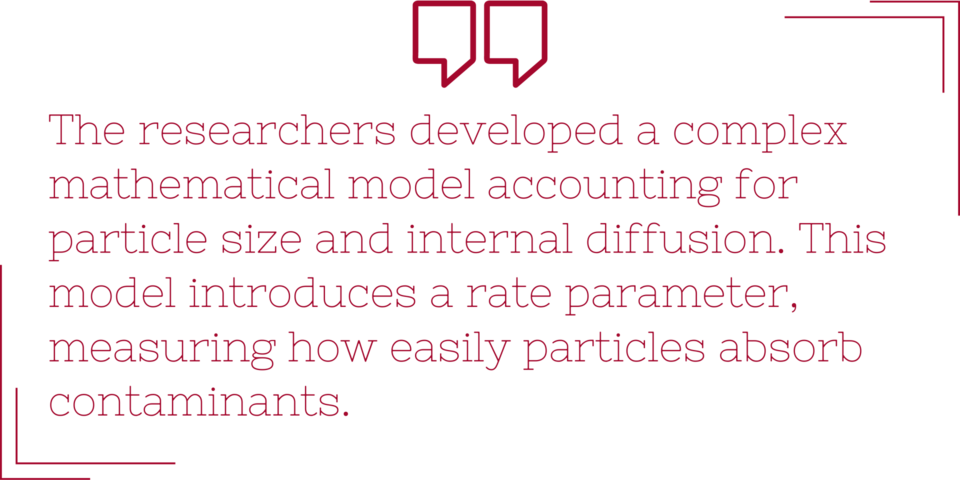
This model is more complex than traditional models involving mass balance and kinetic equations. However, it offers the advantage of accommodating size effects and intra-particle diffusion. In certain scenarios, it aligns with traditional models. Conversely, in cases where contaminants take their time to enter or adsorption mainly occurs on the particle’s outer surface, this model exhibits clear distinctions, surpassing traditional models in predicting breakthrough trends.
This study is part of a project funded by the Spanish Ministry of Science and Innovation and provides a significant contribution to our understanding of column sorption and contaminant removal. Future research endeavours may explore even more advanced models, including those that consider a broader range of effects, such as pore blocking by large molecules. As we continue our journey toward a cleaner tomorrow, the synergy between mathematics and environmental science remains one of our most potent tools.
Referenced article:
Valverde, A., Cabrera-Codony, A., Calvo-Schwarzwalder, M., & Myers, T. G. (2024). Investigating the impact of adsorbent particle size on column adsorption kinetics through a mathematical model. International Journal of Heat and Mass Transfer, 218, 124724.
RESEARCH TEAM

CRM Comm
Pau Varela
CRMComm@crm.cat
Subscribe for more CRM News
From Real Problems to Mathematical Applications: A Chronicle of the XI Iberian Modeling Week
From July 7 to 11, the CRM became a hub for collaborative problem-solving during the XI Iberian Modeling Week, an international training initiative that brought together nearly 30 students from diverse academic backgrounds to tackle real-world...
The Way DNA Folds Might Help Explain How Cells Decide What to Become
A new study by researchers from the University of Edinburgh, Oxford, and CRM reveals how the 3D structure of DNA and a microscopic molecular tug-of-war shape the identity of every cell in our...
The CRM hosts a new edition of the Barcelona Introduction to Mathematical Research summer school
From June 30 to July 25, 2025, the CRM is organising a new edition of the Barcelona Introduction to Mathematical Research (BIMR), a summer school hosted at the Universitat Autònoma de Barcelona. The programme brings together 30 undergraduate...
Niclas Rieger defends his PhD thesis on data-driven climate analysis and marine pollution
Niclas Rieger defended his PhD thesis at the Institut de Ciències del Mar, culminating a research journey focused on extracting insights from both massive climate datasets and scarce environmental observations. Developed within the European CAFE...
A Day of Higher Structures in Symplectic and Poisson Geometry, with Summer Tapas at UPC Barcelona
The event "A Summer Tapas Invitation to Higher Structures in Symplectic and Poisson Geometry I", held on July 7, 2025, at EPSEB–UPC, featured talks by Alejandro Cabrera, Chenchang Zhu, Miquel Cueca, and Mario Garcia-Fernandez, offering a rich and informal exploration...
Luís Álamo, premi al millor pòster a la SFMC 2025 per un treball dirigit per Jezabel Curbelo
Luís Álamo, estudiant del màster FISYMAT de la Universitat de Granada, ha guanyat el premi al millor pòster a la conferència 3rd Spanish Fluid Mechanics Conference (SFMC25) amb un treball sobre estructures coherents Lagrangianes, basat en el seu...
Three CRM Researchers Invited to Speak at the 2026 International Congress of Mathematicians
From left to right: Xavier Cabré, Joaquim Ortega (photo by Xènia Fuentes, UB), and Xavier Tolsa. Three researchers affiliated with the Centre de Recerca Matemàtica (CRM), Xavier Cabré, Joaquim Ortega-Cerdà and Xavier Tolsa, have been invited to...
Gissell Estrada, beca Leonardo 2025 per explorar la migració col·lectiva amb matemàtiques i robots
L’investigadora Gissell Estrada Rodríguez, professora a la UPC i adscrita al CRM, ha rebut una Beca Leonardo 2025 per desenvolupar un projecte que combina matemàtiques i robòtica per estudiar la migració col·lectiva en sistemes vius i artificials....
JISD 2025 – Where Dynamical Systems Meet PDEs
JISD 2025, held at the Centre de Recerca Matemàtica (CRM) from June 30 to July 4, 2025, featured four advanced minicourses delivered by Dmitry Dolgopyat (on averaging and Fermi acceleration in dynamical systems), Serena Dipierro (on the theory of nonlocal minimal...
CERCA llança la campanya “Recerca amb orgull” per promoure la diversitat LGBTI+ en la ciència
La institució CERCA ha llançat la campanya “Recerca amb orgull” per promoure la visibilitat i la inclusió de les persones LGBTI+ en l’àmbit científic. Amb el lema “Als centres CERCA, fem ciència amb diversitat”, la iniciativa denuncia les...
ICMNS 2025: Ten Years of Mathematical Neuroscience, Celebrated in Barcelona
The 10th edition of the International Conference on Mathematical Neuroscience (ICMNS 2025) gathered more than 150 researchers from over 25 countries at the PRBB in Barcelona. Organised by the CRM and UPC, with the support of UPF, the event...
Hong Wang: On Solving Kakeya and Rethinking Restriction
At the Modern Trends in Fourier Analysis conference held at the Centre de Recerca Matemàtica, mathematician Hong Wang (NYU Courant) presented a new approach to the Stein restriction conjecture, connecting it with geometric incidence problems...





